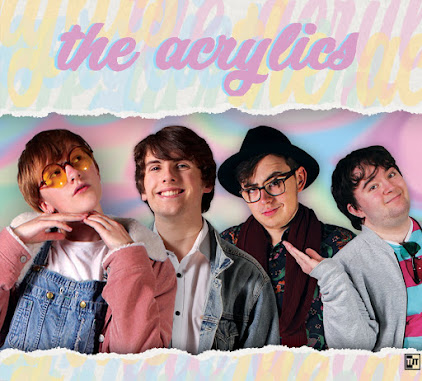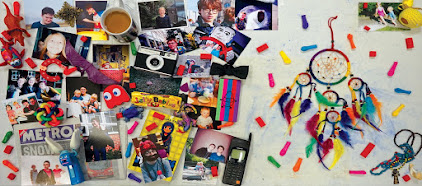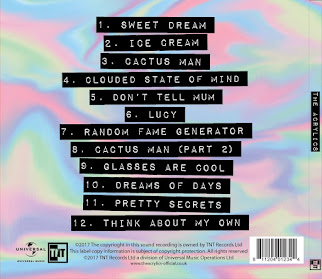 |
| One of the 'film stills' that we shot. Click to enlarge. |
The film still actually contains a few techniques that signify genre. The most obvious one would be the prop- a magnifying glass is an immediate signifier for some sort of crime thriller. The overall low-key lighting, being pierced by a sole light source, is also quite conventional for this genre. The old-fashioned lantern conveys that it is set in a historical time period rather than the modern day; historical settings are also quite conventional for crime thrillers due to the large amount of literature to draw inspiration from, such as Sherlock Holmes for example. The close-up framing also helps connote the genre as crime thriller, as mystery is a key part of crime thrillers, and by leaving out the character's face mystery is created- this also works well at creating narrative, by prompting the audience to ask questions about the character and their purpose.
2) How was the shot directed to achieve the desired effect?
We specifically chose to only focus on our character's hand to achieve the mysterious effect and connote the genre- choosing a magnifying glass as the prop and putting it in the centre focal point of the shot was done for the same reason, as magnifying glasses are synonymous with the crime thriller genre. We used quite specific lighting and framing to convey everything we wanted to: for example, we chose a very dark area to take the shot, and proceeded to make it even darker by covering up nearby light sources such as a window just out of frame. We also had an artificial light source, and used it's weakness as a strength by making it seem like the old lantern was lit, while preserving the overall dark look of the shot. Framing and mise-en-scene thus was very carefully done- we had to keep the hand in frame and employ a dramatic close-up, but also cover up the light and it's power cable to preserve the illusion of a historical setting as much as possible.
3) How is the audience intended to 'read' and/or interpret the still? What meanings are trying to be communicated?
Our still is trying to convey a sense of mystery and drama as the dominant reading; it doesn't quite have an explicit meaning per say, however it is open to interpretation and the audience could consider the sparseness of the scene as being symbolic of the lack of clues the presumed detective has. As mentioned before, we tried to use tightly controlled lighting and framing to connote the sense of mystery and drama, and thus the crime thriller genre. Hopefully when the audience sees this still, they instantly pick up on the gloomy atmosphere, and notice the magnifying glass being illuminated by the lantern in its position as the focal image, and therefore they also immediately associate the shot with a detective film similar to Sherlock Holmes. As for the meaning- we didn't have much equipment or time, so we tried to make that an advantage. With less things cluttering the scene, the magnifying glass is brought more into focus, and the aforementioned hunt for a clue in such a sparse environment is exacerbated.
4) How is the shot successful at what it is trying to achieve?
By keeping a tight framing, the shot's mise-en-scene is very noticeable, as is the juxtaposition of the illuminated detective and magnifying glass in the foreground, and the contrasting darkness in the background. This light/dark contrast links to one of the main themes of the crime thriller genre- namely the struggle of a good person, often the detective, with their dark past. This is known as chiaroscuro. The magnifying glass is a point of anchorage, as the focal image of the shot, as an obvious sign that points to the crime thriller genre, and as an instrument of narrative. The light thus works with it, emphasising these points, and further signifying the gloominess of the scene and raising the question of who the detective is and what he is looking for. All the elements of the shot work well together, as mentioned here and in the answers to the rest of the questions.
5) What should have been done differently in hindsight?
In hindsight, I am not certain if the sparsity of the shot is worth the meaning we were trying to evoke. More props, possibly accompanied by a slightly zoomed out shot, maybe a medium close-up for example, may have increased the immersion of the scene and helped enhance the idea that the scene is taking place in a historical period. The historical setting is a signifier for the crime thriller genre, and working more around that setting is arguably more impactful and nicer to look at than the current shot. Lighting could also be improved- while the lantern still creates a good contrast between the dark background and the light foreground, there are still some light leaks in the background that damage the effect we were trying to achieve. Possibly a high-angle, over-the-shoulder shot would have worked well too; it would have revealed more of the character, while still preserving the mystery by not showing the face, and it is quite an interesting and immersive point of view.




An excellent reflective analysis Emilio; full of detail and appropriate terminology, including technical. Well done.
ReplyDelete